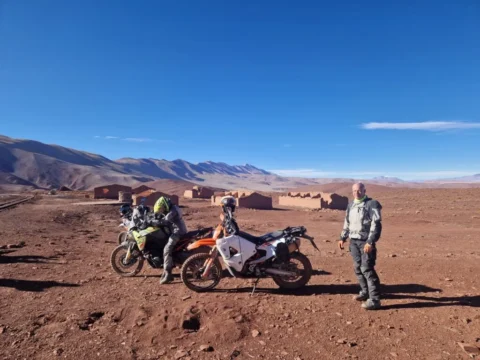India on a Motorcycle. Riding through the Highest Passes in the Himalayas: Ladakh, Zanskar and Kashmir. A Travel Diary.
Our motorcycle journey through India on the way to Leh was filled with unexpected twists and constant challenges. Crossing one of the world’s highest drivable passes, Taglang La, we faced rain, cold, and snow, underscoring the rugged beauty of the Himalayan landscape. Despite these tough conditions, encounters with fellow riders, including other Poles, offered encouragement and the motivation to push onward. Reaching Leh provided the long-awaited relief we needed, with leisurely days spent exploring Buddhist monasteries and enjoying local festivals. We even attempted the climb to Khardung La, the highest accessible pass, although snow and ice eventually halted our progress. Our journey through the Himalayan valleys was not only a test of endurance but also an immersion into local culture and spirituality. Each day brought new discoveries, from Buddhist monasteries to the charming villages of the Zanskar Valley. This adventure was a true blend of adrenaline, spirituality, and unforgettable vistas that will remain in our memories forever.
India on a Motorcycle, En Route to Leh: Conquering the Taglang La Pass
The morning greeted us with a surprise – rain, and mountains shrouded in clouds. We needed to cross Taglang La (17,480 ft), one of the world’s highest drivable passes. On top of that, the locals started their day at 5:30, waking everyone up, although they only departed at 8, joining us on the road.
After a quick local breakfast, we suited up in rain gear and set off for the first ascent up a wide plateau. Soon, we passed all the Enfields on the road. The landscape here resembled central Tibet, with roads that are more tracks than highways. The gravel paths allowed us to move fairly quickly, certainly faster than navigating switchbacks.
Midway across the plateau, we paused for a much-needed tea break while waiting for Alberto, who had taken a tumble and was busy gathering his things. Once we regrouped, we resumed our conquest of Taglang La. The route remained gravelly, and we had to overtake numerous trucks, including a military convoy.
Harsh Weather Conditions
The rain began to intensify, and just a few hundred meters before the pass, it turned to snow. Memories of the Tajik-Kyrgyz border surfaced, where we had crossed a pass in deep snow. Fortunately, the snow hadn’t yet settled on the road, though everything around us was blanketed in white. We knew we had to cross quickly, so we didn’t even pause for photos. We descended the other side without having to plow through drifts, with only the frost on our helmets and visors as reminders of the cold.
Beyond the pass, soaked through, we stopped for lunch. The remaining route to Leh was thankfully easier, as we followed the paved road along the Indus River. However, just a few miles past the pass, Alberto got a flat tire. Changing the inner tube took some time, but it had its perks. While working on the repair, two KTM motorcycles pulled up – Polish riders Mariusz Reweda and Tomek from “kilometr.pl.” What a coincidence! We hadn’t met many fellow Poles on this journey so far.
Arriving in Leh
We continued on to Leh as a group of five motorcycles: two KTMs, Antonio on his Honda Transalp, and us on our Honda Africa Twins. In Leh, we found a cozy hostel in the heart of the old town, complete with a garden where we could park our bikes. We even met another Polish traveler, Sylwia, making for quite the gathering. We spent the evening chatting in a local spot that boasted the best momos – dumplings in India.
Momos are popular dumplings in India, especially in Himalayan regions like Ladakh, Sikkim, and Dharamsala. They are inspired by Tibetan and Nepalese cuisine and are typically filled with a variety of stuffings, most commonly meat (chicken, lamb) or vegetables. Momos can be steamed, fried, or baked and are often served with spicy sauces or a soup, giving them a unique, bold flavor.
The next few days are spent leisurely exploring Leh and shopping. Mariusz and Tomek can only stay for a day due to time constraints, and Sylwia is flying back to Poland on September 2nd. We’re taking it easy, relaxing, and planning our next route, which naturally shifts a bit from the original plan. We’re also in luck, as a local festival kicks off the day we arrive. We get to watch masked monk dances, parades of different Ladakhi communities, and enjoy the sounds of local music.

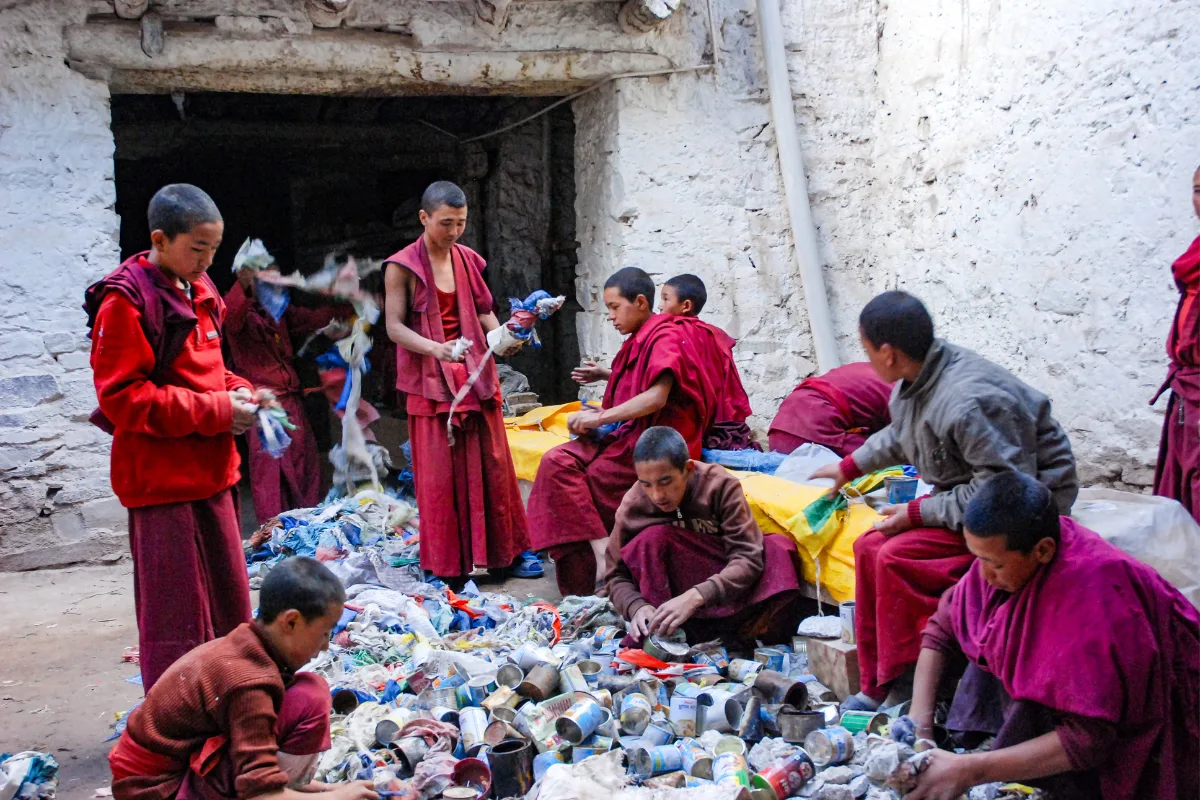
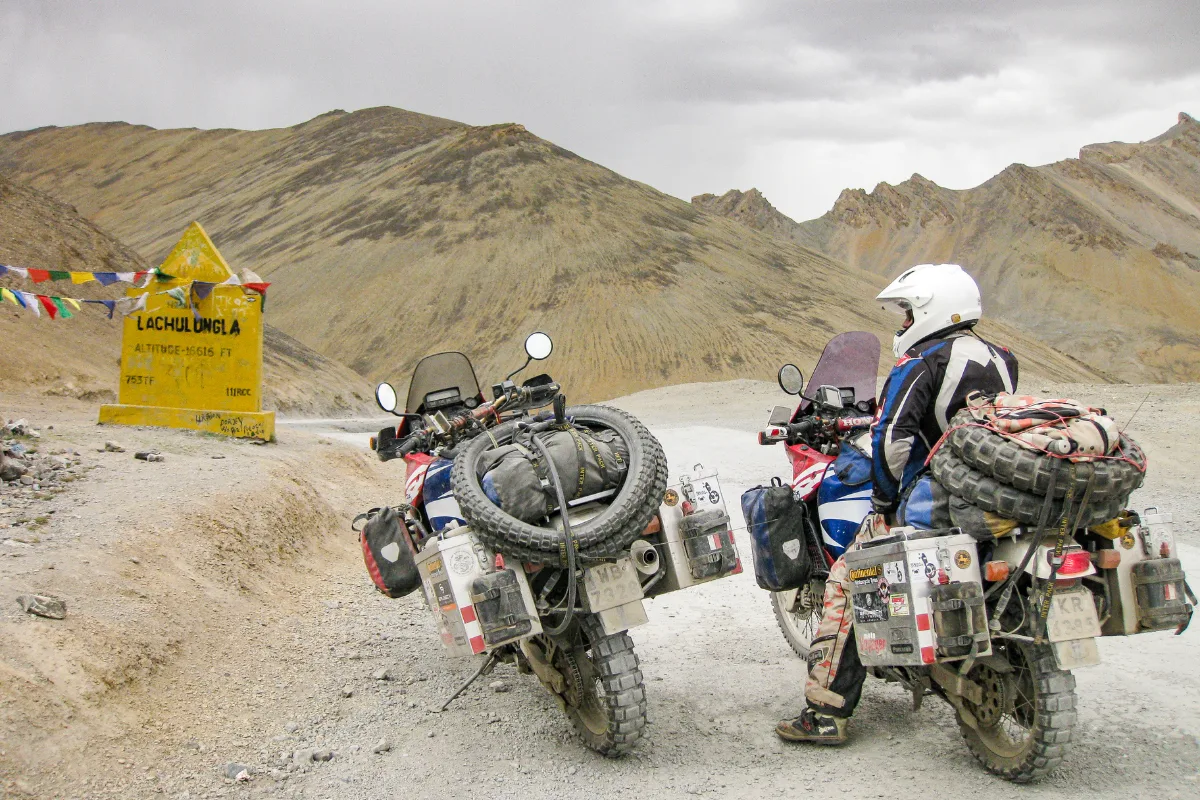
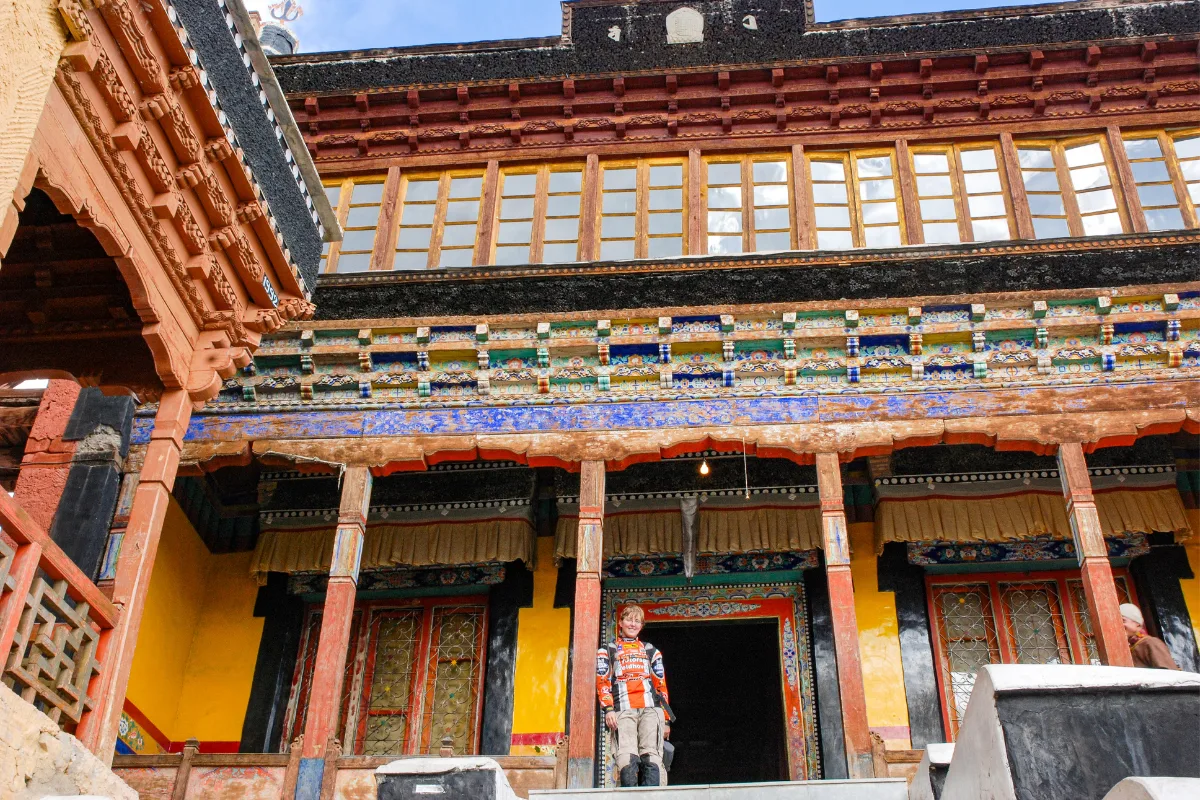
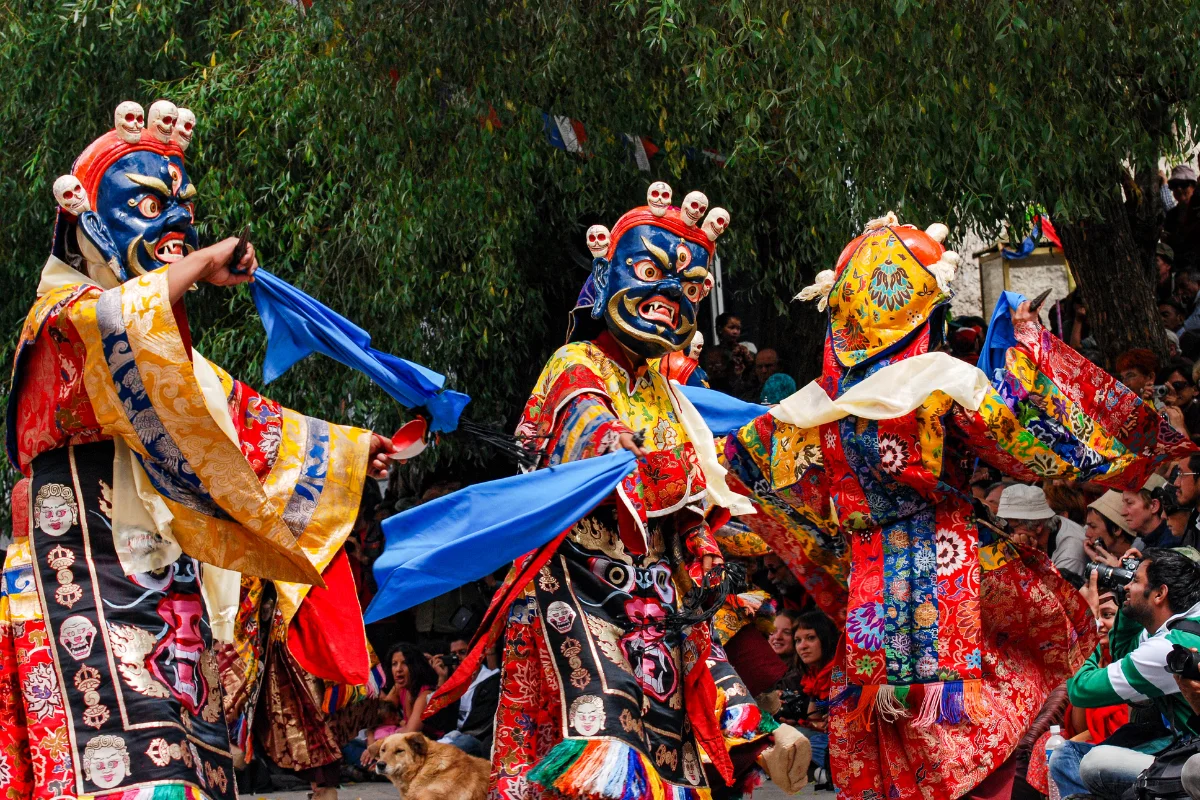
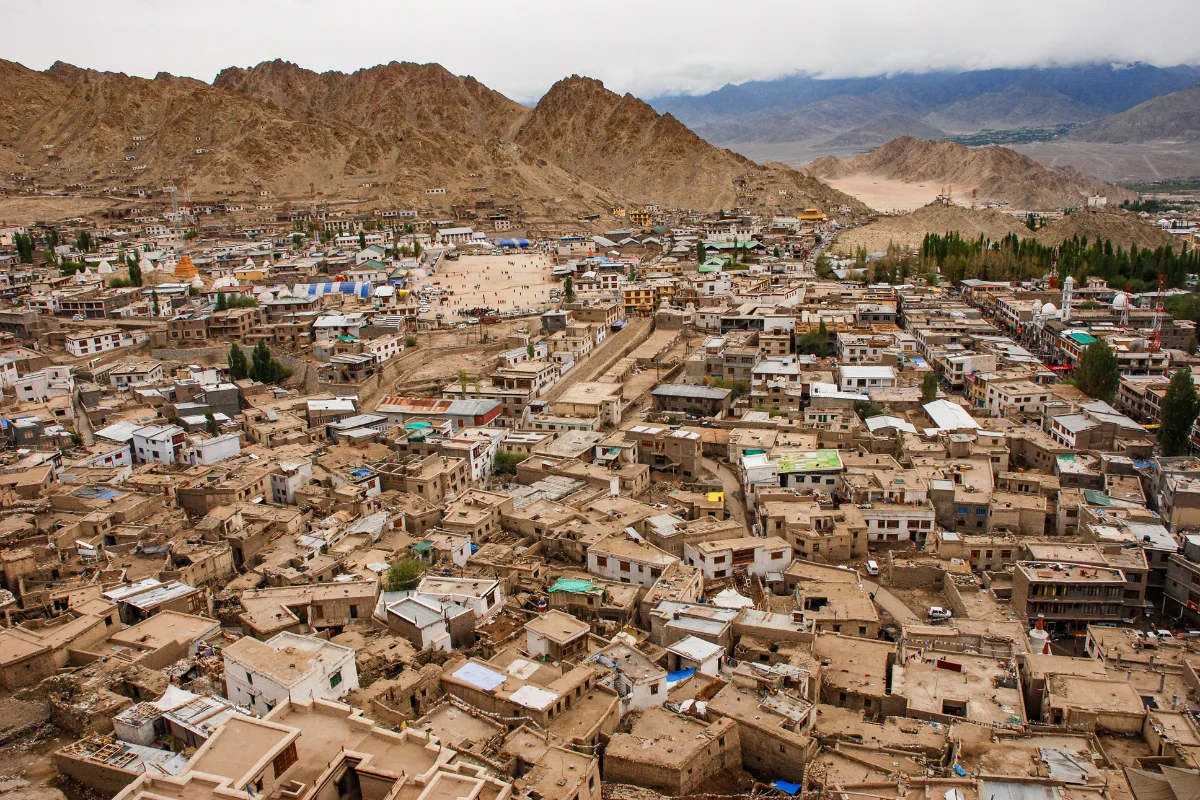
The Iconic Khardung La Pass
For three days, we attempted to reach Khardung La (18,372 ft), reputedly the highest motorable pass in the world, and cross over to the Nubra Valley. Accessing the pass requires registration at a police checkpoint, but each time we arrived, we found the road was closed due to snow or ice.
The recent rainy nights in Leh meant snow had fallen in the mountains. At least we became well-acquainted with the first half of the road to the pass. Not overly concerned by the closures, we decided to explore the Buddhist monasteries along the Indus Valley near Leh, where there were plenty to choose from.
One day was spent conversing with monks and admiring the beautiful Buddhist structures in Shey, Thiksey, and Hemis. The valley was also hosting various performances as part of the local festival. In one of Leh’s monasteries, we caught a traditional masked dance, celebrated annually by monks during the festival. The atmosphere was mesmerizing, though our concentration was occasionally disrupted by “bloodthirsty tourists and reporters” with enormous cameras.
We ate at our favorite local eatery every day. The owners knew us well, and the regulars had grown accustomed to our presence. These three days in Leh were truly a cultural and culinary delight.
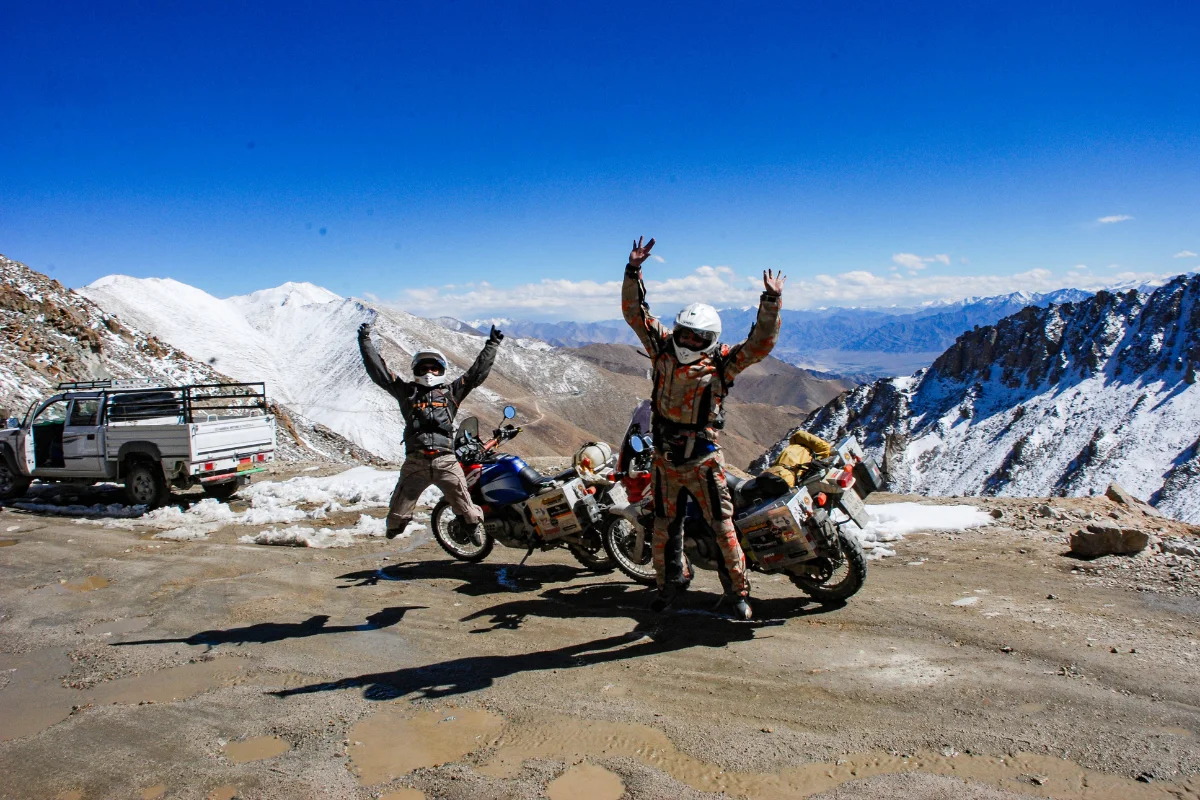
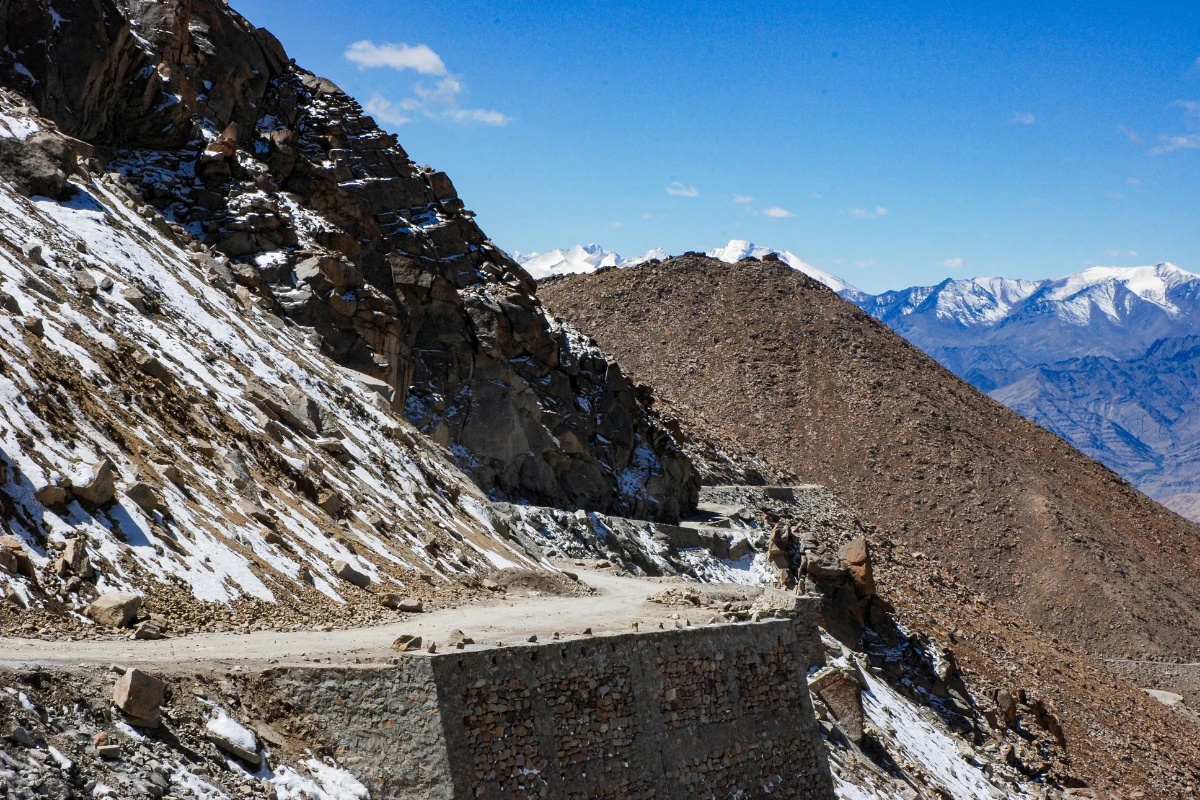
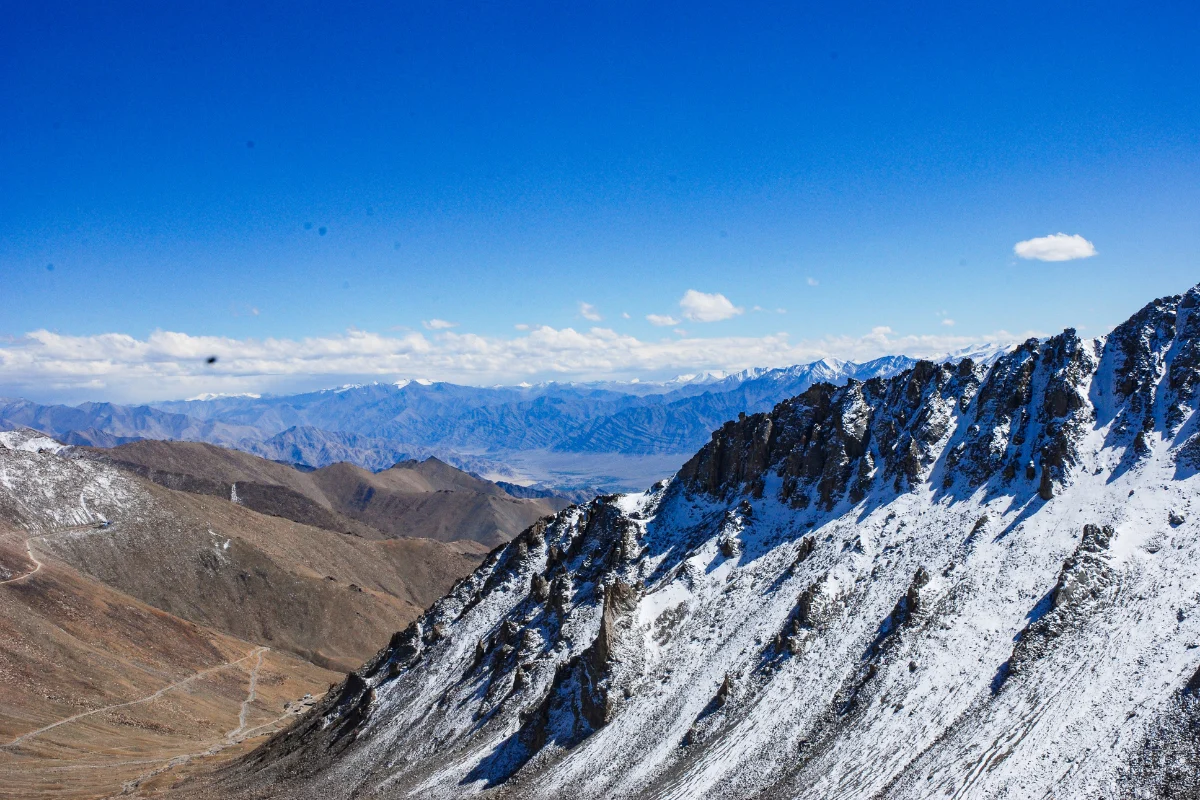
India on a Motorcycle: The Road from Leh to Kargil
The road from Leh to Kargil was surprisingly decent, mostly paved, though there were still bumpy, dusty stretches under repair. For about 50 miles, we contended with dust, not bad for a 150-mile route. Riding through small villages was slower, with narrow roads, heavy foot traffic, and constant need to slow down.
The scenery, however, was breathtaking. The meandering Indus River, surrounded by rugged cliffs, and several spectacular Buddhist monasteries, like Alchi and Lamayuru, captivated us. These temples date back to the 11th century, and their wall paintings remain in remarkable condition. Near Lamayuru, the road, carved into rock, led us over two passes, each around 13,000 ft. Passing trucks in such conditions, sometimes with only inches to spare, was a challenge in itself.
That day, we rode as a pair, with Alberto planning to leave Leh later and catch up with us. The day was long and tiring, and we arrived in Kargil around 6 p.m. Kargil is the first larger Muslim-majority city on our route through India. It has numerous mosques, with calls to prayer resonating every few hours. This wasn’t a place we planned to linger, though. After a night in a hotel, we left some belongings behind and set off toward the Zanskar Valley.
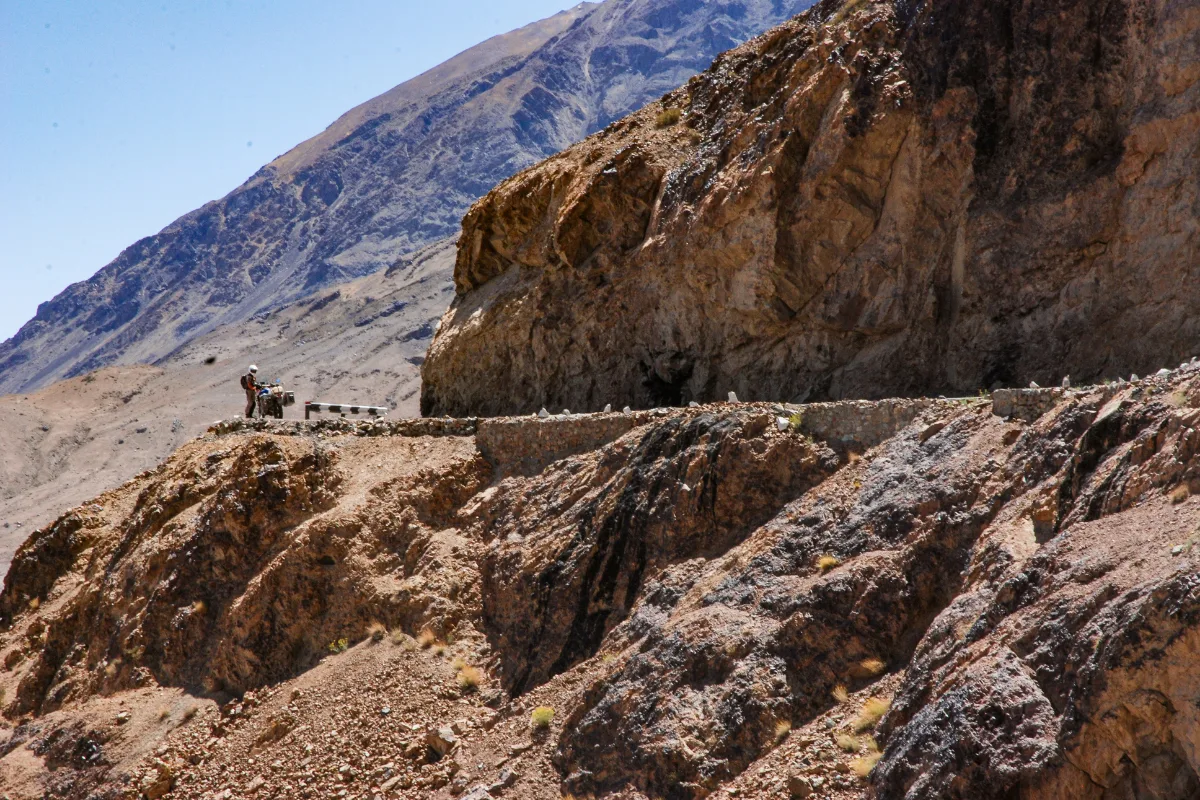
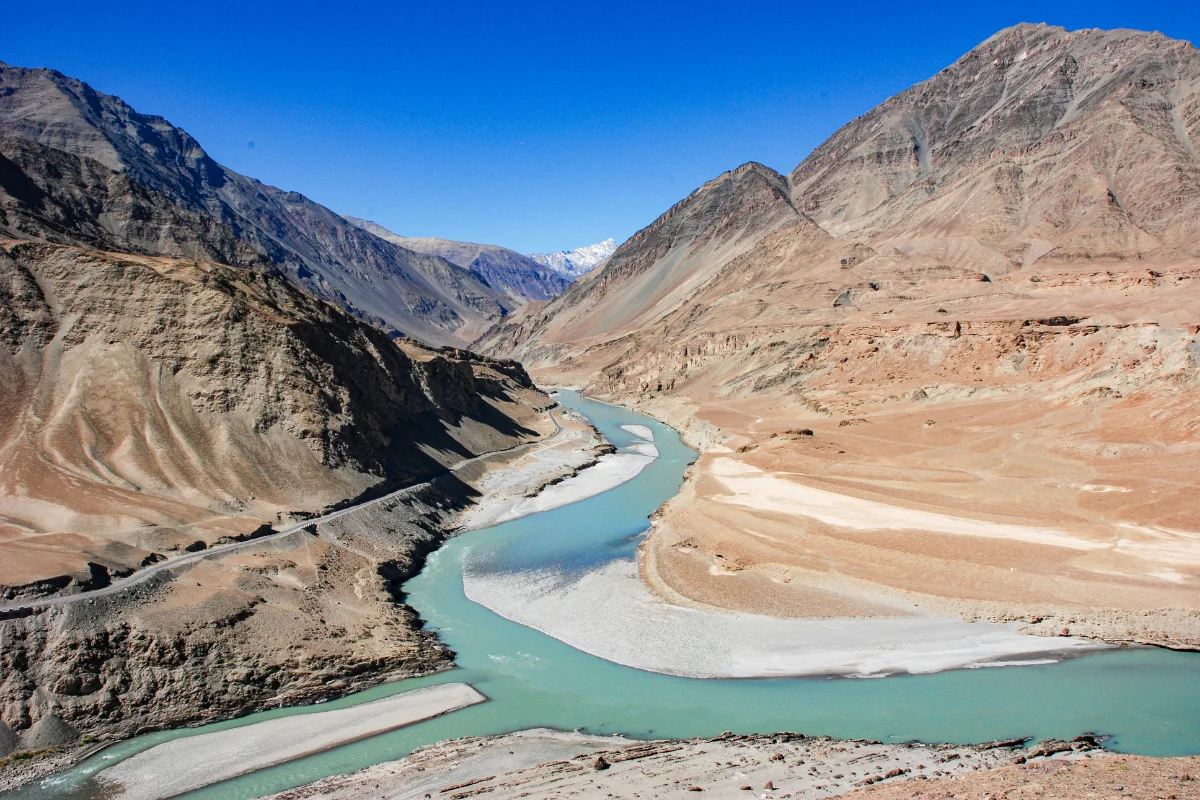
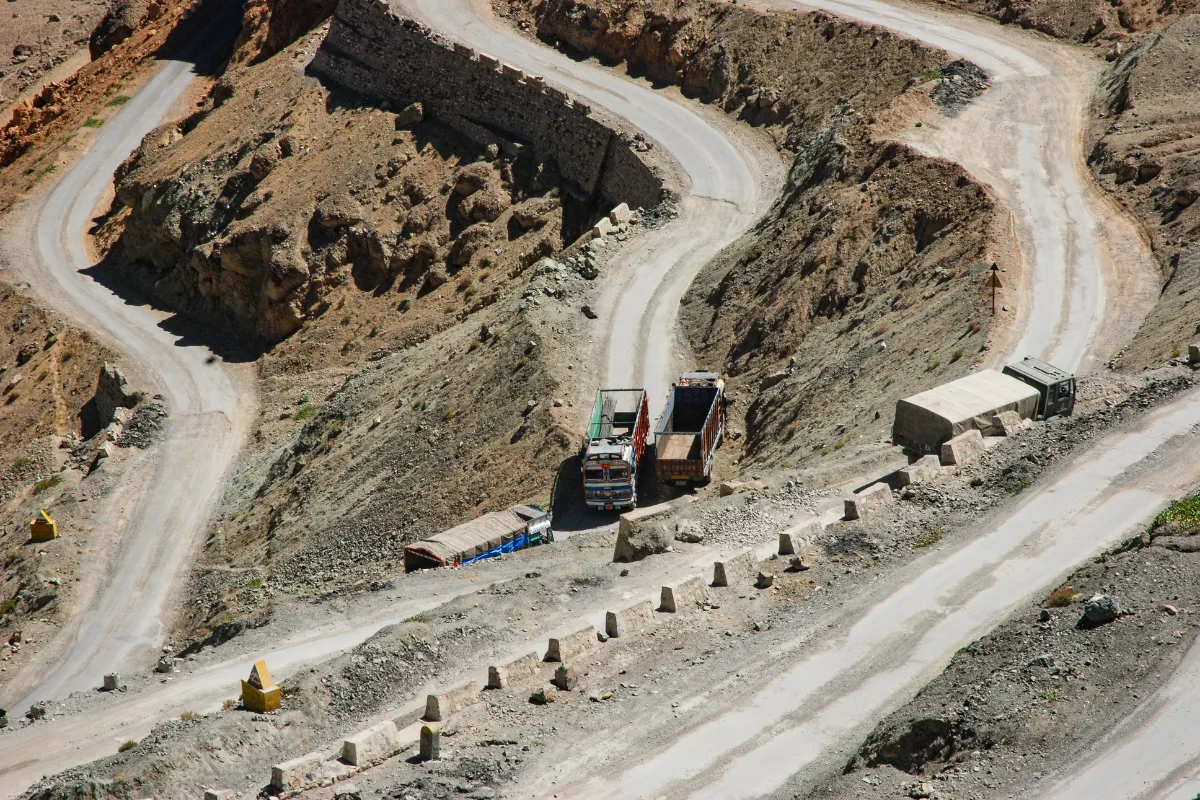
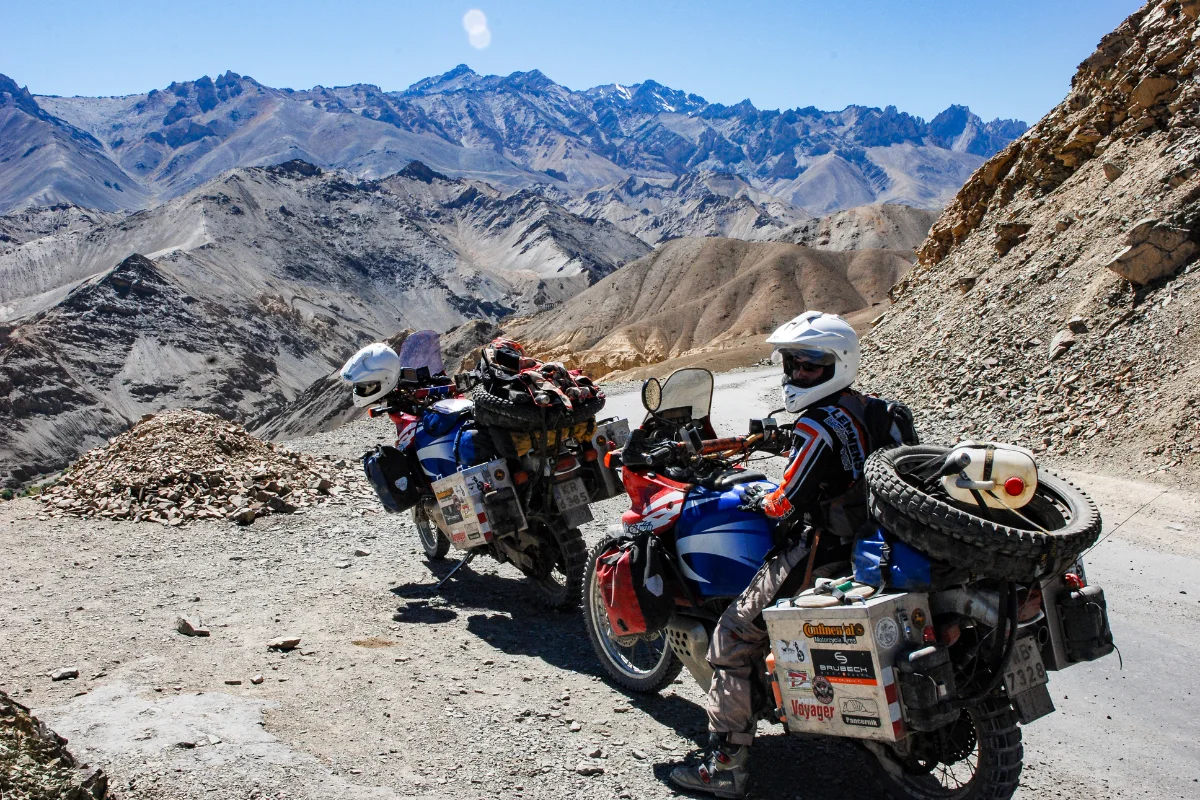
Suru Valley and Zanskar Valley
We faced several days of riding on the rugged terrain of the Suru and Zanskar Valleys, where paved roads are yet to reach. The Zanskar Valley is considered one of the most isolated and untouched valleys in the Himalayas. Accessible only by road from Kargil, the valley requires retracing the same path to exit. The only other ways in are hiking trails or, in winter, traveling over the frozen Zanskar River.
On our first day, we planned to cover just over 100 km to gauge our pace on these challenging roads. Unfortunately, the gravel road was anything but forgiving. Where there was loose gravel, we moved smoothly, but many stretches required navigating rocks and even small boulders. The views in the Suru Valley were stunning, especially the snow-capped peaks of the 7,000-meter giants, Nun and Kun, which stood out as particularly breathtaking.
Since about 2021, three access routes now lead to the Zanskar Valley: from Lamayuru, along the Zanskar River, and from Jispa via the SirSir La Pass. Traditional hiking trails are gradually being converted into roads suitable for vehicles. Initially gravel, these routes are increasingly paved. Since 2023, MotoBirds has been organizing motorcycle expeditions along all these routes. Although Zanskar Valley is no longer as isolated, and civilization is slowly changing its character, it remains one of the most scenic and thrilling routes in the Himalayas.

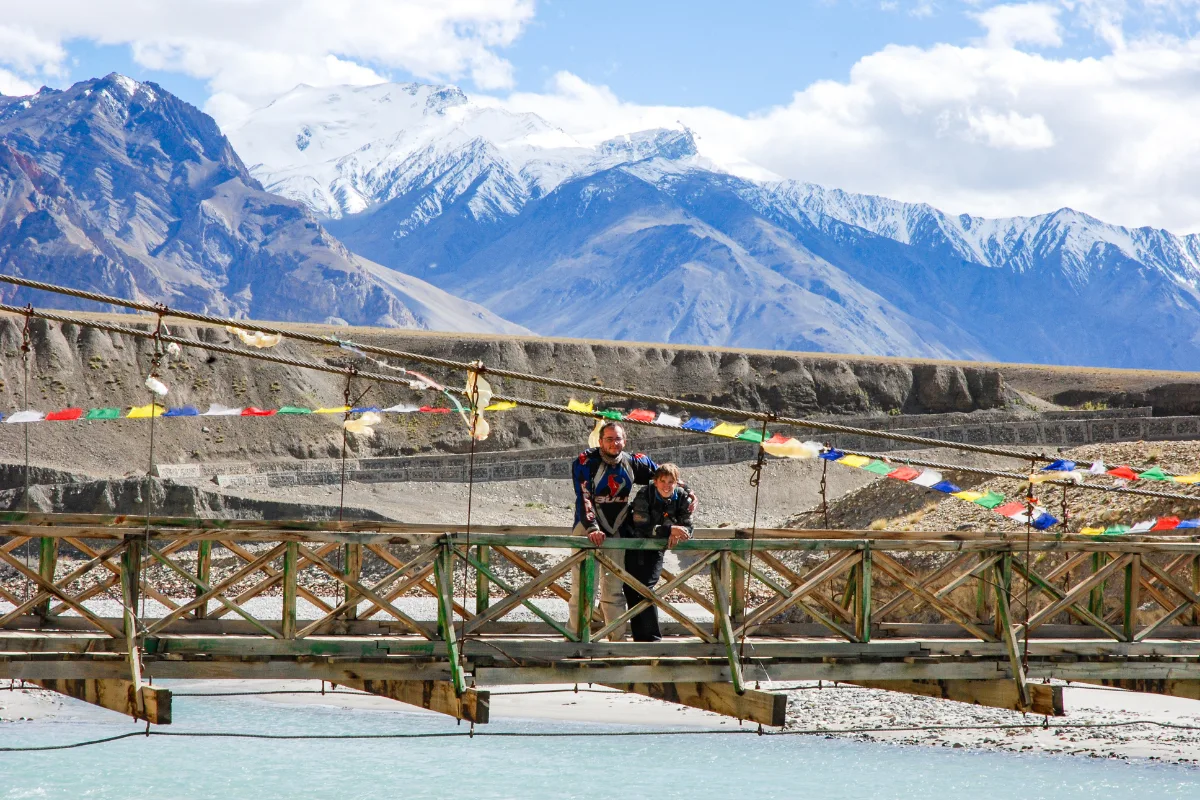
Arrival in the Village of Rangdum
In the evening, we arrived in Rangdum, a village where a dramatic rock formation rises from the valley floor, topped by the first Buddhist monastery we encountered. It’s a surreal transition— the first part of the Suru Valley is predominantly Muslim, with villages dotted with mosques. After crossing a modest pass, the mosques disappear, replaced by Buddhist temples. The monks at the monastery are warm and welcoming, clearly eager for connection with the outside world. They even allowed us to stay in one of the monastery’s rooms, marking our first night in a Buddhist monastery.

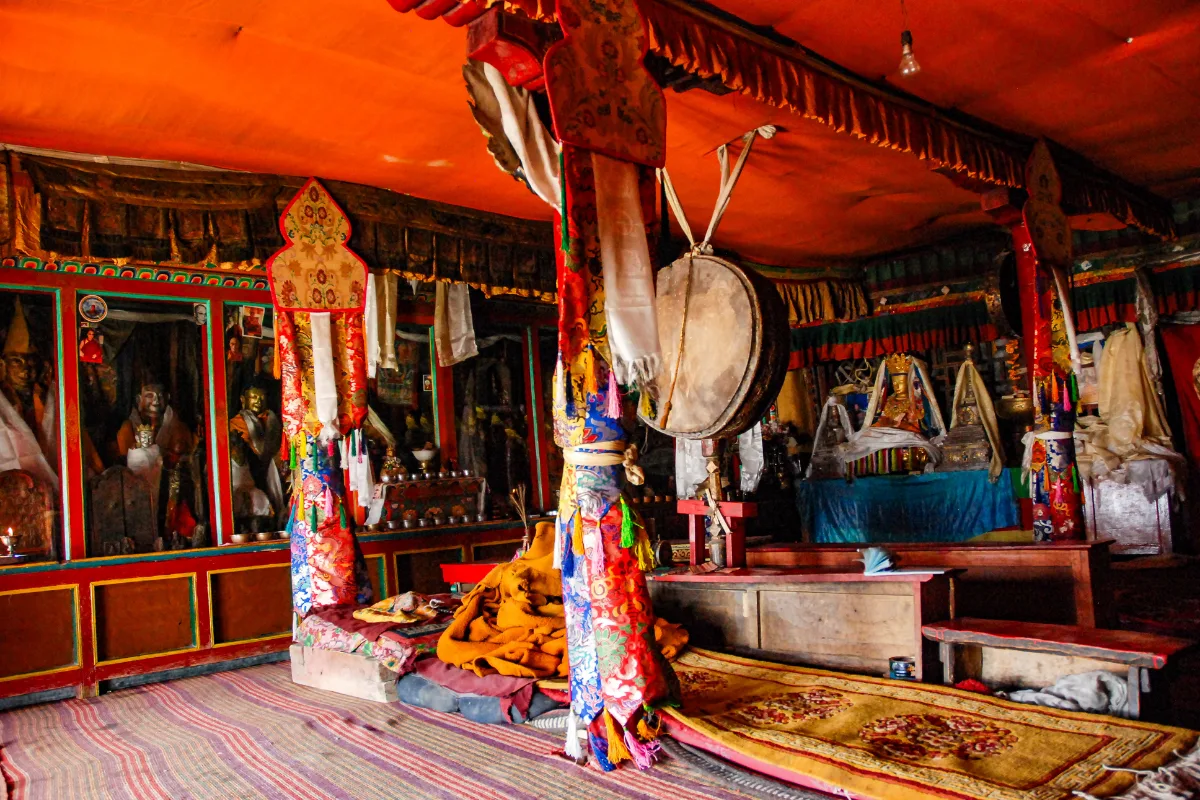

India on a Motorcycle: Crossing the Zanskar Valley – En Route to Padum
Spending the night in a Buddhist monastery was a unique experience, and the morning views were like something out of a dream. After a quick breakfast (muesli from our supplies), we set off toward the heart of the Zanskar Valley, separated from us by a pass at 4,300 meters.
The road, thankfully, became less rocky and more gravelly, allowing us to pick up speed. We crossed the pass without much trouble, and the Zanskar Valley proved to be as wild and untouched as described. The villages we passed looked as though they hadn’t changed in centuries. On the steep Himalayan slopes, we could see caves once used for meditation over the ages.
The weather took a slight turn, with cloud cover replacing the sun, though, fortunately, it didn’t rain. Without lingering, we made it to Padum, the largest town in the valley. Compared to the remote villages, Padum felt relatively modern—we even found an internet café with satellite access!
While the town itself wasn’t particularly charming, it served as an excellent base to explore the valley’s monasteries. The next day, we set out on two motorcycles—Jurek’s and Alberto’s (I left mine in Padum to save fuel for the return) to explore. Our first stop was Karsha Monastery, the oldest and largest in the valley, clinging to the sheer cliffs of the hillside. The monks were open and friendly, giving us an opportunity to learn more about the monastery’s history.
Karsha Monastery is the largest and oldest monastery in the Zanskar Valley, perched on mountain slopes that offer a breathtaking view of the valley below. Founded in the 11th century, Karsha is a significant center of Tibetan Buddhism, renowned for its beautiful wall paintings and numerous chapels. Home to several dozen monks, the monastery radiates an atmosphere of peace and spirituality, making it one of the most enchanting and mystical places in the entire region.
Next, we head to Stongde Monastery, which is even more isolated from the outside world. Finally, we visit the nunnery in Zangla. Buddhist nunneries are often more modest and less affluent than their male counterparts, but they are just as beautiful. We happen to arrive during a lesson for the young nuns, which brings plenty of laughter for everyone.
Stongde Monastery is the second-largest monastery in the Zanskar Valley, perched on a picturesque hill with sweeping views of the surrounding mountains. Founded in the 11th century, Stongde is renowned for its richly decorated interiors and numerous chapels, attracting pilgrims and travelers alike. The monastery’s serene atmosphere, enveloped by silence and the majesty of nature, fosters contemplation and spiritual focus. It’s a place where history and religion intertwine harmoniously, creating an extraordinary ambiance.
The nunnery in Zangla is a small monastery nestled in the Zanskar Valley, set apart amidst rugged Himalayan landscapes. It is more modest and less affluent than the male monasteries, but its simplicity and spirituality hold a unique charm. The nunnery is home to nuns dedicated to daily prayers and work, leading a life of seclusion. Visiting this monastery offers a close connection to local culture and Buddhist traditions.
Zangla is home to royalty—actually, two kings of the Zanskar Valley. We see their house and palace, perched high on a rocky outcrop, but unfortunately, the kings aren’t in residence. Our day exploring the Zanskar Valley turns out to be one of the most enjoyable in the Himalayas, with stunning views, beautiful weather, no other foreigners in sight, and warm smiles from the locals.
Return from Padum to Kargil – India on a Motorcycle
From Padum, we needed to return to Kargil—another 245 km of rocky roads lay ahead. We decided to attempt the journey in a single day, despite many Indian motorcyclists assuring us it was impossible. Knowing the route by now, we were aware of what to expect and where the most challenging sections were.
To our surprise, we completed the route faster than expected. Exhausted but relieved, we didn’t need to look for a place to stay—we headed straight to the small hotel in Kargil where we had left some of our belongings.
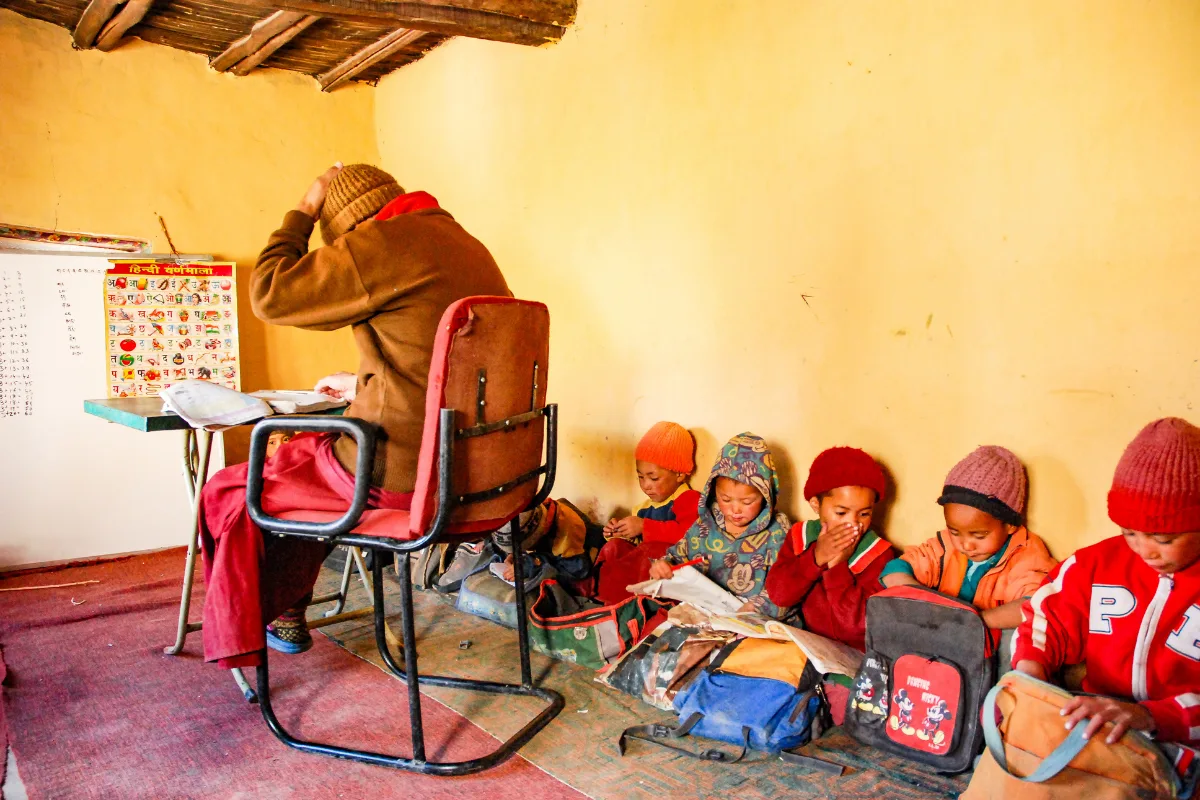
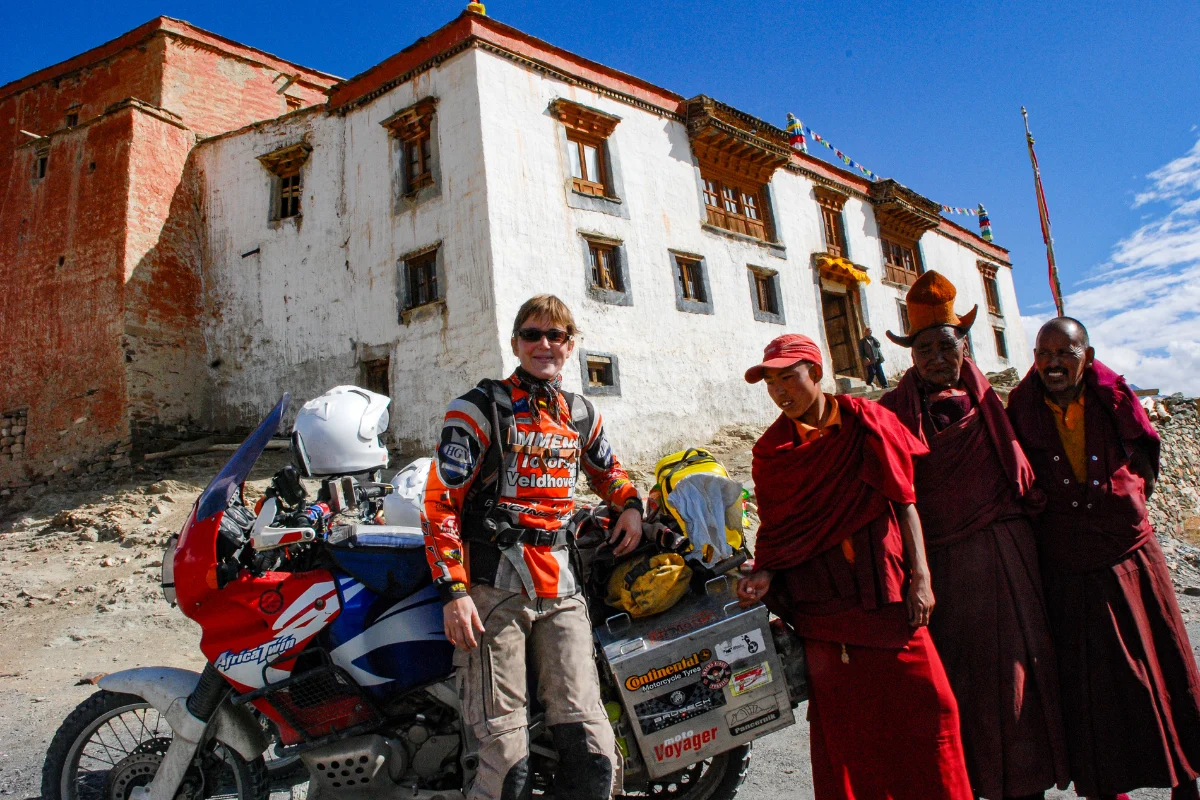
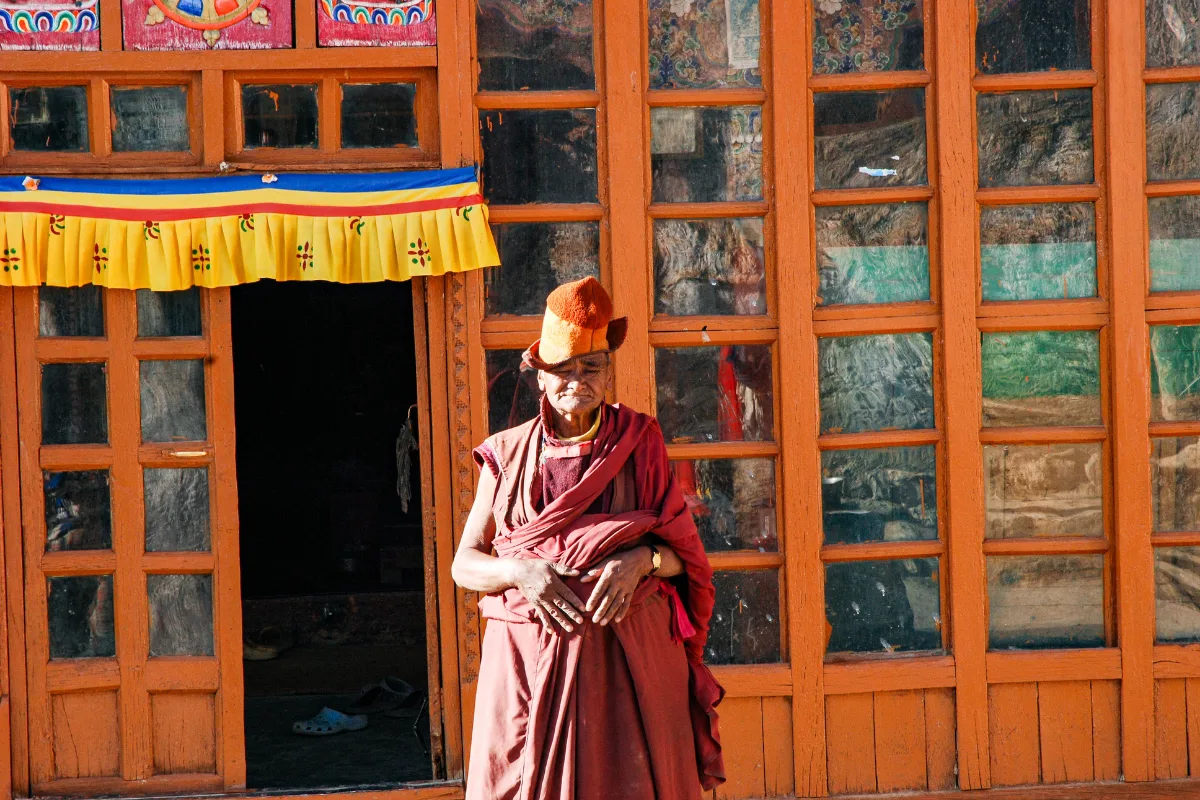
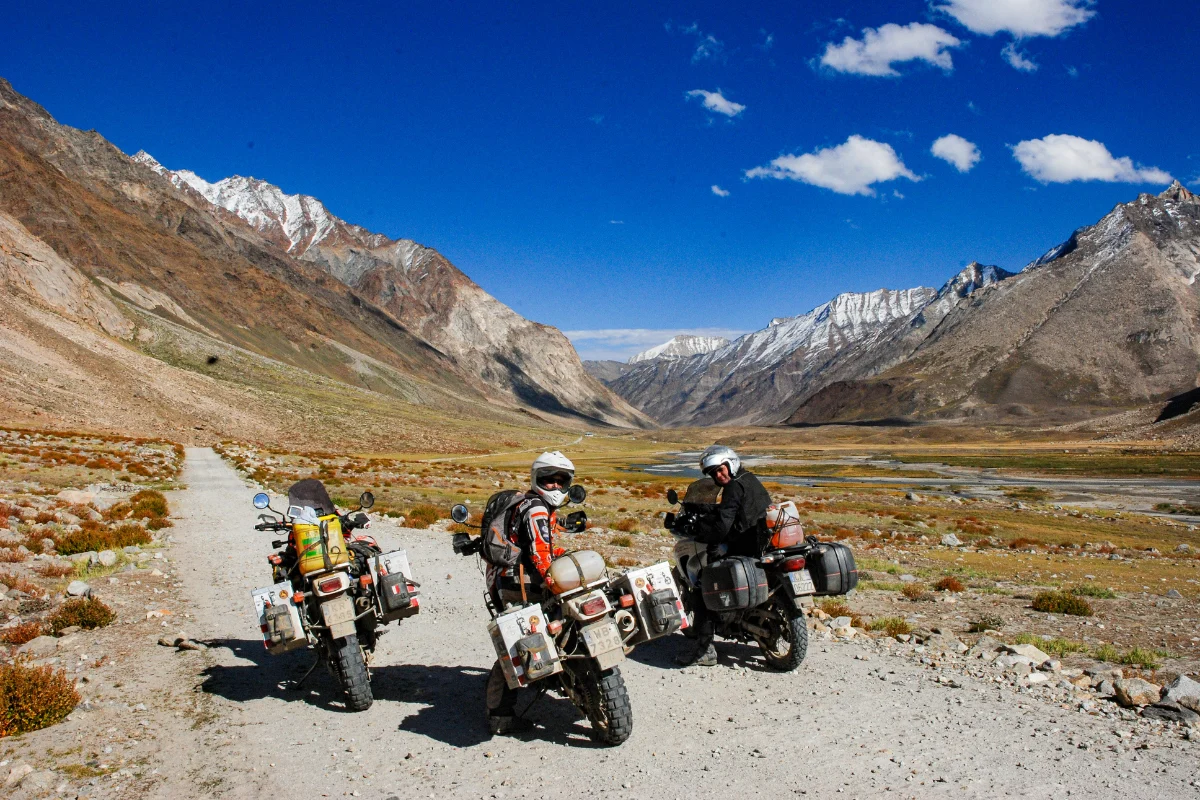
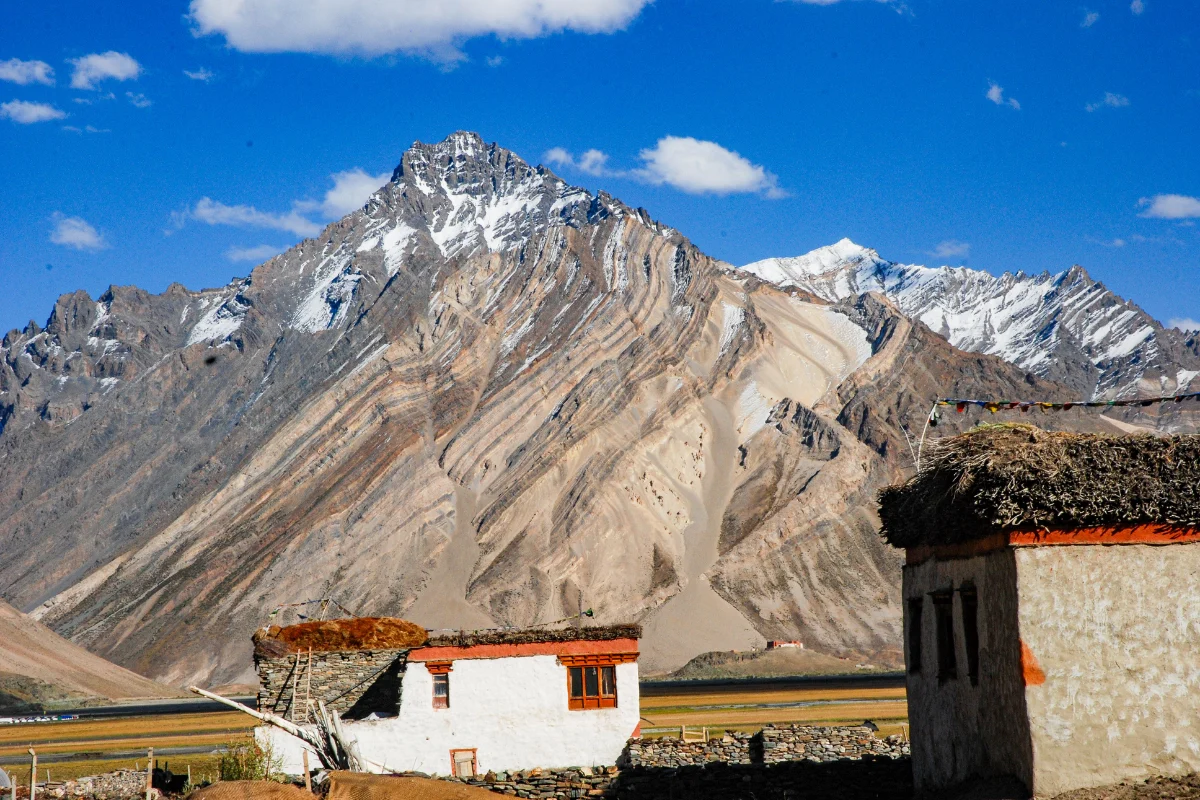

Route to Srinagar via Zoji La Pass
The next day, we set off on the main road to Srinagar. This leg of the journey involved crossing the last high pass, Zoji La, which separates Ladakh from the Kashmir Valley. The ascent to the pass is relatively short—only about 400 meters—but the descent on the other side is much longer, rougher, and more off-road.
Beyond Zoji La, the landscape changed drastically, creating another “climate-landscape-culture shock” along our route. The mountains and valley turned lush and green, with rice fields scattered throughout. Buddhist temples disappeared from the towns, replaced by mosques. Girls and women wore headscarves, marking the clear presence of Islam.
Driving styles on the roads also changed, becoming more chaotic, typical of India’s lowlands, and the temperature rose significantly. By afternoon, we arrived in Srinagar, the capital of Kashmir, known as the City of Gardens.
Srinagar “The City of Gardens”
Srinagar, the capital of the Kashmir region, is a picturesque city known as the “City of Gardens.” Located on the shores of Dal Lake, it is famous for its houseboats—floating homes that serve as hotels and residences. The city is adorned with beautiful Mughal-style gardens, such as Shalimar Bagh and Nishat Bagh, which bloom vibrantly in spring and summer. Srinagar is also known for its scenic canals, where traditional shikara boats glide, offering both transportation and a floating marketplace. Despite the region’s complex political situation, Srinagar remains peaceful and is a popular destination, especially for those looking to experience the captivating landscapes and rich cultural heritage of Kashmir.
The Main Attraction of Srinagar: Houseboats
The main draw in Srinagar is the houseboats, floating homes that serve as hotels. Around 1,500 of these houseboat hotels are spread across two lakes in Srinagar. Finding a good place at a fair price can be challenging, but thanks to a tip from a British traveler we met in Leh, we managed to find a lovely spot. The interior of our houseboat feels almost regal, a welcome change after the modest, nearly primitive conditions in Ladakh. Unfortunately, Srinagar is also known for its persistent local vendors who try to sell everything, everywhere, at any time. It’s hard to avoid them, and they’re very skilled in their trade, so eventually, we end up buying something despite our attempts not to.
Tourism in Srinagar, as in all of Kashmir, has slowed due to the tense political climate. Military presence is everywhere, with heavily armed soldiers patrolling the streets. Nevertheless, the atmosphere is calm and pleasant for now.
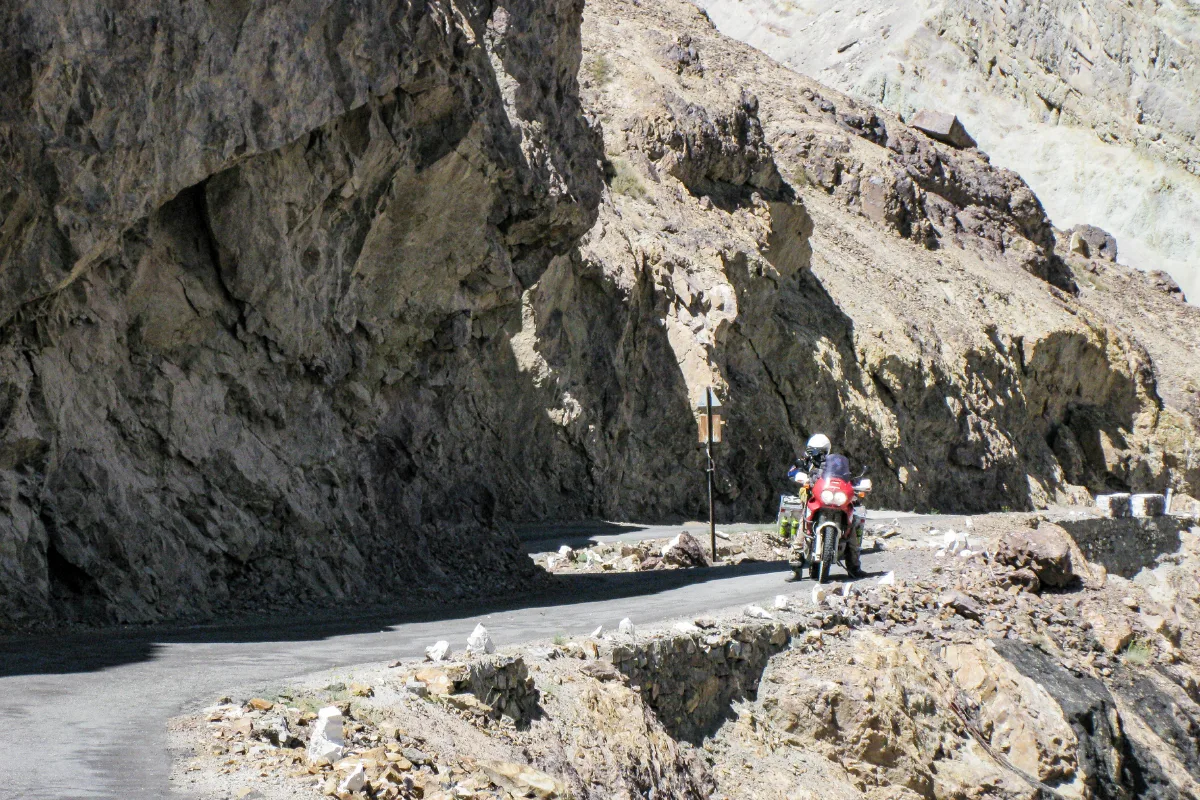
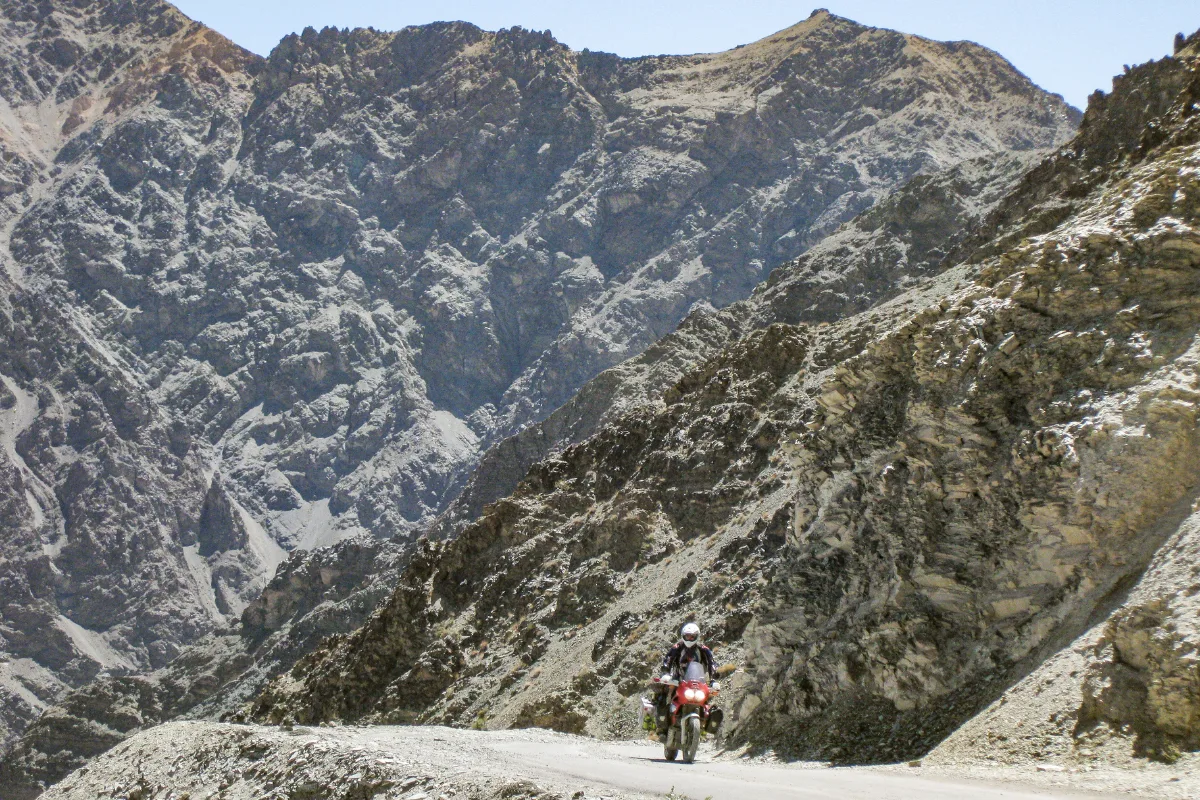
Traveling Around Srinagar
We spent an entire day exploring by shikara, the small gondola-like boats used as a primary mode of transportation here. Srinagar’s waterways feel reminiscent of Venice, with locals traveling by boat through lakes, connecting canals, and among houseboat hotels, floating markets, and water gardens. The floating gardens—filled with water lilies and other aquatic flowers—are especially impressive.
At the end of the day, we had to help our boatman paddle back to our houseboat hotel as a storm was rolling in. Rowing a shikara with a canopy against the wind was a challenge, and we reached our boat just after dark, in the first few drops of rain. It was right on the edge of a fierce storm.
We spent Jurek’s birthday (September 16) in Srinagar as well. Although celebrations were limited—being in a Muslim city during Ramadan didn’t lend itself to much festivity—the day was still enjoyable.
TO BE CONTINUED…
Join us on this incredible journey. Once or twice a month, you can expect another installment of our adventure. This way, you will feel the magic of those days, discover the beauty of the places we visited, and relive all the extraordinary moments with us. Each entry is not only a story of adventures but also of the challenges we encountered along the way, the people we met, and the cultures we had the chance to explore.
The world changes, but the memories of our travels remain eternal. What we experienced shaped us and enriched our lives with incredible experiences that we want to share with you. Each episode of our journey will give you the opportunity to travel through time and space, to places full of adventures, surprises, and beautiful landscapes.
We invite you to actively participate in this journey. We look forward to your comments and reflections, and maybe even your own travel stories! Your story can be an inspiration for us and other readers. Share your experiences, insights, and questions with us. Together, we will create a community of motorcycle travel enthusiasts, ready to share knowledge and memories. 🙂
FIND OUT MORE
Discover all the stages of our historic motorcycle journey from Poland to India. Read more about the Motorcycle Expedition to India with Aleksandra Trzaskowska.


Newsletter subscribers get more!
Join MotoBirds Soaring Newsletter and don't miss any important content, gear tests, travel inspirations and newest offers in the future! We'll also let you know about fresh publications on our blog.

